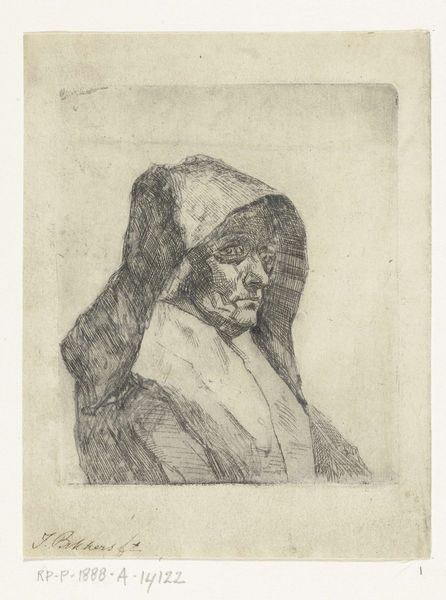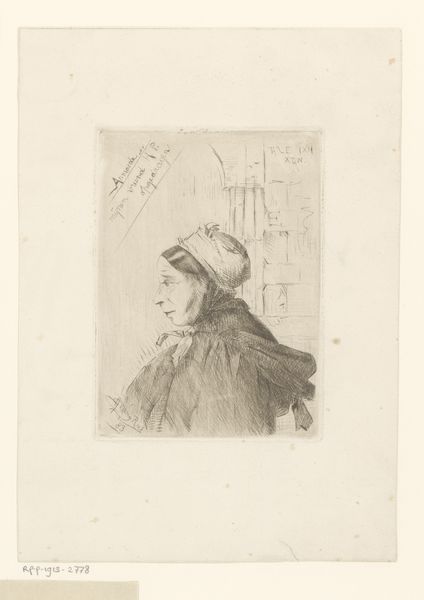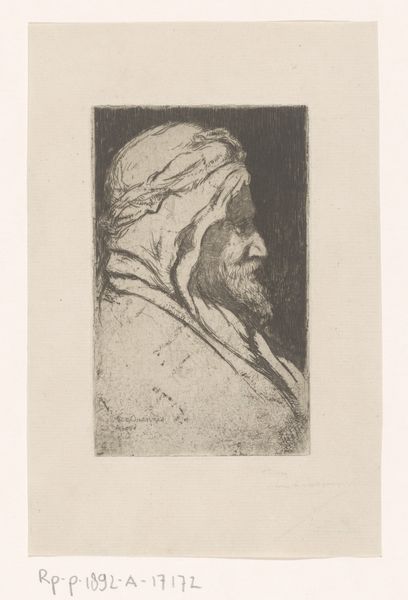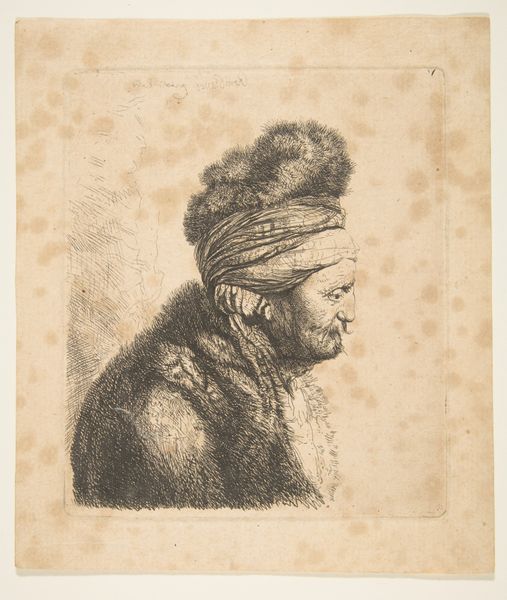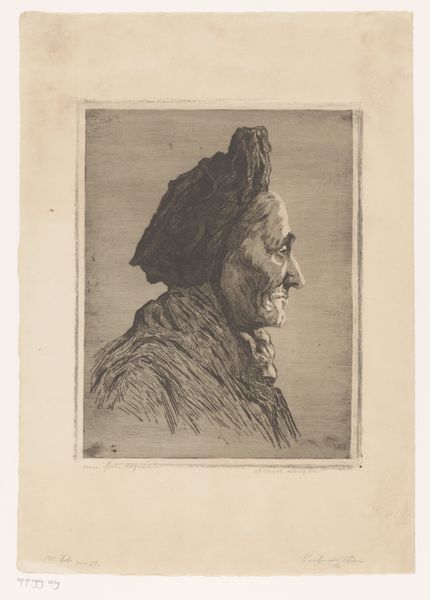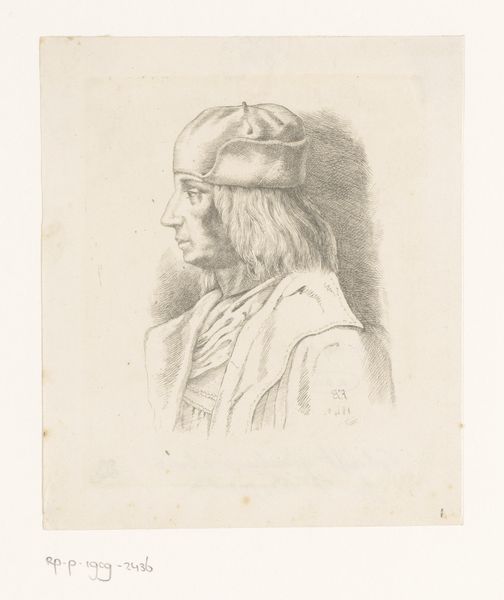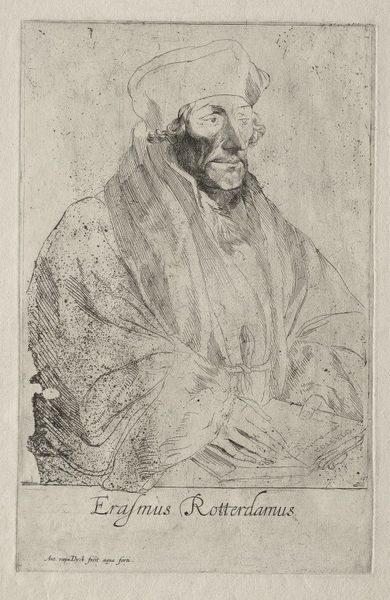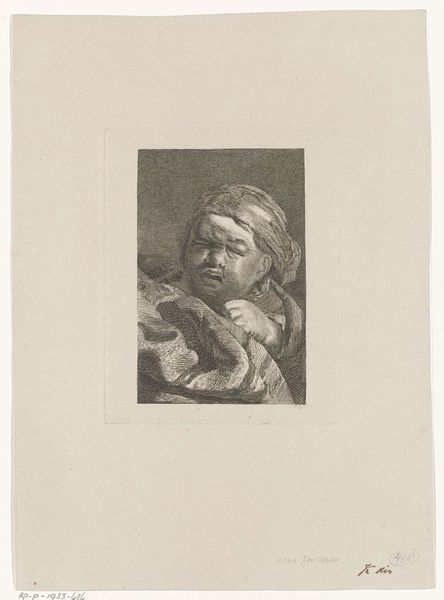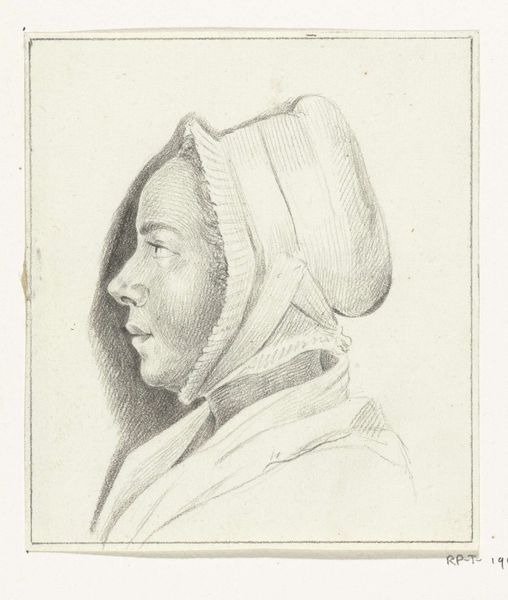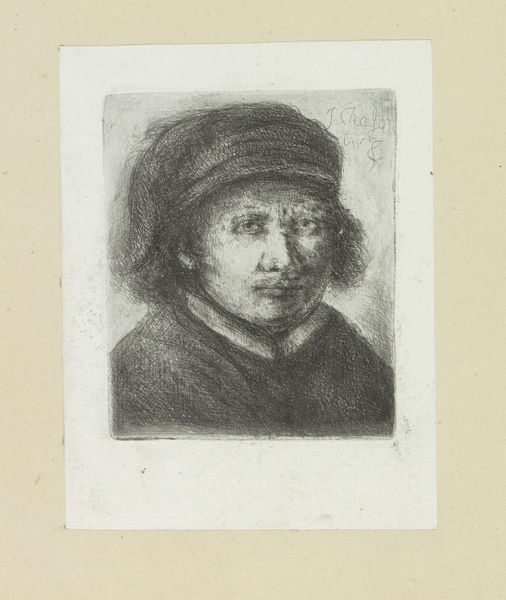
print, etching, drypoint
#
portrait
# print
#
etching
#
drypoint
Dimensions: 5 15/16 x 4 15/16 in. (15.08 x 12.54 cm) (plate)8 15/16 x 6 15/16 in. (22.7 x 17.62 cm) (sheet)
Copyright: No Copyright - United States
Curator: There's such a sense of quiet dignity about this piece. Editor: I agree. What we’re looking at here is “Juan,” a 1923 print by William Shuster in etching and drypoint. It resides here at the Minneapolis Institute of Art. It is really intimate—it's the size of a postcard! Curator: Right, you almost feel as if you've stumbled upon him in a private moment, just turning away slightly. I like that it captures the side profile of an indigenous man, perhaps deep in thought, wrapped in simple clothing and wearing a head wrap. It is timeless. Editor: Exactly! It's important to remember Shuster’s artistic community was consciously crafting an idealized vision of the Southwest, partly to draw in tourists. Works like "Juan" promoted the region's art, which had to negotiate both authenticity and romanticism, fitting into a complicated cultural and commercial landscape. Curator: I’d say Shuster achieved something more profound though. The limited color palette, the gentle shading... it’s an exquisite demonstration of form and light, which also gives Juan an undeniable sense of nobility. Editor: True, and consider the social context: this was a period of romanticizing "exotic" cultures while simultaneously marginalizing Native American communities. Images like these were complicated commodities—selling a vision of a disappearing way of life while real indigenous people faced incredible systemic injustices. Curator: And I can’t deny that for me it is a connection across time. When I look into his eyes I see something real. You know, beauty exists without manipulation, perhaps? Editor: I think it serves as a powerful reminder of the politics inherent in image making, then and now, doesn’t it? How images get created and circulate, what meanings they conjure, and how these representations influence people's understanding of different populations and communities... That's the power of visual art. Curator: Absolutely! I feel I have found something new myself in his silent, powerful gaze. Editor: Yes, “Juan” serves to connect us across time and to help us become more aware of how meaning is constructed and portrayed, perhaps for good, or perhaps as something manipulative. Food for thought.
Comments
No comments
Be the first to comment and join the conversation on the ultimate creative platform.


